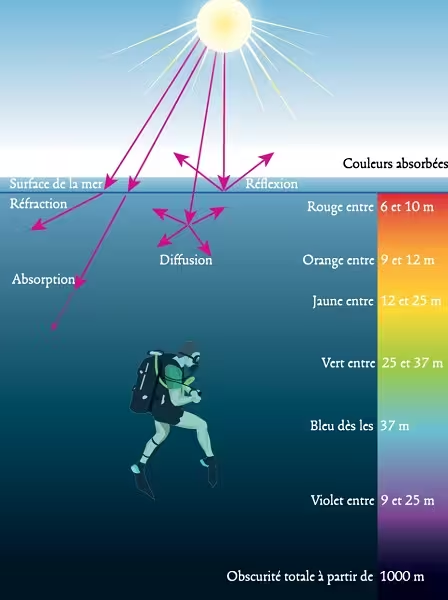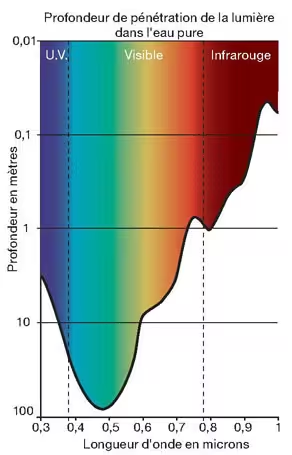Light goes underwater too !
But as the light enters the water, it is broken down into a rainbow. And since this phenomenon is physical, it's been there as long as there's been water on the planet. In other words, life has adapted and developed from the outset according to the light that enters the water.

Due to its decomposition, "colors" do not reach the same depths, and aquatic species have adapted to the wavelengths of each depth.

The lower you go, the weaker the light, and the most resistant wavelengths remain in the blue and UV range.
This explains why you shouldn't light up rivers, lakes and aquatic environments.
In ray-finned fish, feeding, schooling and migration depend on specific light intensities. Altering these intensities can therefore modify the behavior of individuals.
Like many aquatic invertebrates, zooplankton move vertically through the water column throughout the day. Zooplankton avoid surface predators during the day and feed on surface phytoplankton at night. However, in the presence of light pollution, environmental illumination remains high both day and night. Under these conditions, the number of zooplankton to migrate and the amplitude of vertical migration decrease, leading to a proliferation of micro-algae on the water surface.
There is a risk of eutrophysation of aquatic environments!
More details on l’encyclopédie de l’environnement.